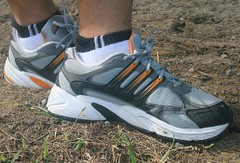The rate of photosynthesis is affected by the following factors:
- LIGHT INTENSITY
- CONCENTRATION OF CARBON DIOXIDE
- TEMPERATURE
When we consider light intensity, immediately we would think that, the higher the light intensity, the higher would the rate of photosynthesis be, right? That's right actually. But at certain point even if the light intensity is increased, the rate will not increase any further. This is because, the chlorophyll in the chloroplasts can only absorb so much energy from sunlight. It's just like pouring water into a glass. The more you pour in water the higher will the water level be in the glass but if the level is already reaching the brim of the glass, no matter how much water you pour in, the water level will not increase any further. UNDERSTAND?
In the above analogy, when the water level reaches the brim of the glass, we can say that the glass is the LIMITING FACTOR because despite the availability of water, the glass can only take so much. Now, lets consider light intensity which is a factor affecting the rate of photosynthesis. In this case, the LIMITING FACTOR is the chlorophyll right? Right you are, if you consider the absorption of light at a point at which the chlorophyll can no longer absorb more than it should. Because, no matter how much light energy there is available, the chlorophyll can only absorb so much. So at this point, increasing the light intensity will not increase the rate of photosynthesis any further.
But mind you, before reaching that particular point where the graph levels off, light intensity is actually the LIMITING FACTOR because the rate of photosynthesis depends on it. Meaning, before this particular point (where the graph levels off), the rate of photosynthesis will only increase, when the light intensity is increased.

Now, lets consider the effect of carbon dioxide concentration. By looking at the graph below, the rate of photosynthesis increases as the concentration (%) of carbon dioxide is increased. We say that carbon dioxide is the LIMITING FACTOR since the rate depends on it. But at certain point, even after increasing the concentration of carbon dioxide, the rate remain constant. After this point, carbon dioxide concentration is no longer the LIMITING FACTOR.

Temperature may also affect the rate of photosynthesis. Since photosynthesis is an enzyme-controlled reaction, the rate depends on the temperature at which the reaction takes place. As can be seen from the graph, as the temperature is increased, the rate will also increased. We say that the temperature is the LIMITING FACTOR since the rate really depends on it. But at the optimum temperature, the reaction decreased and eventually stops at 45 degree celsius because at high temperature the enzyme catalysing photosynthesis is denatured. So, after the optimum temperature, temperature is no longer the LIMITING FACTOR.

